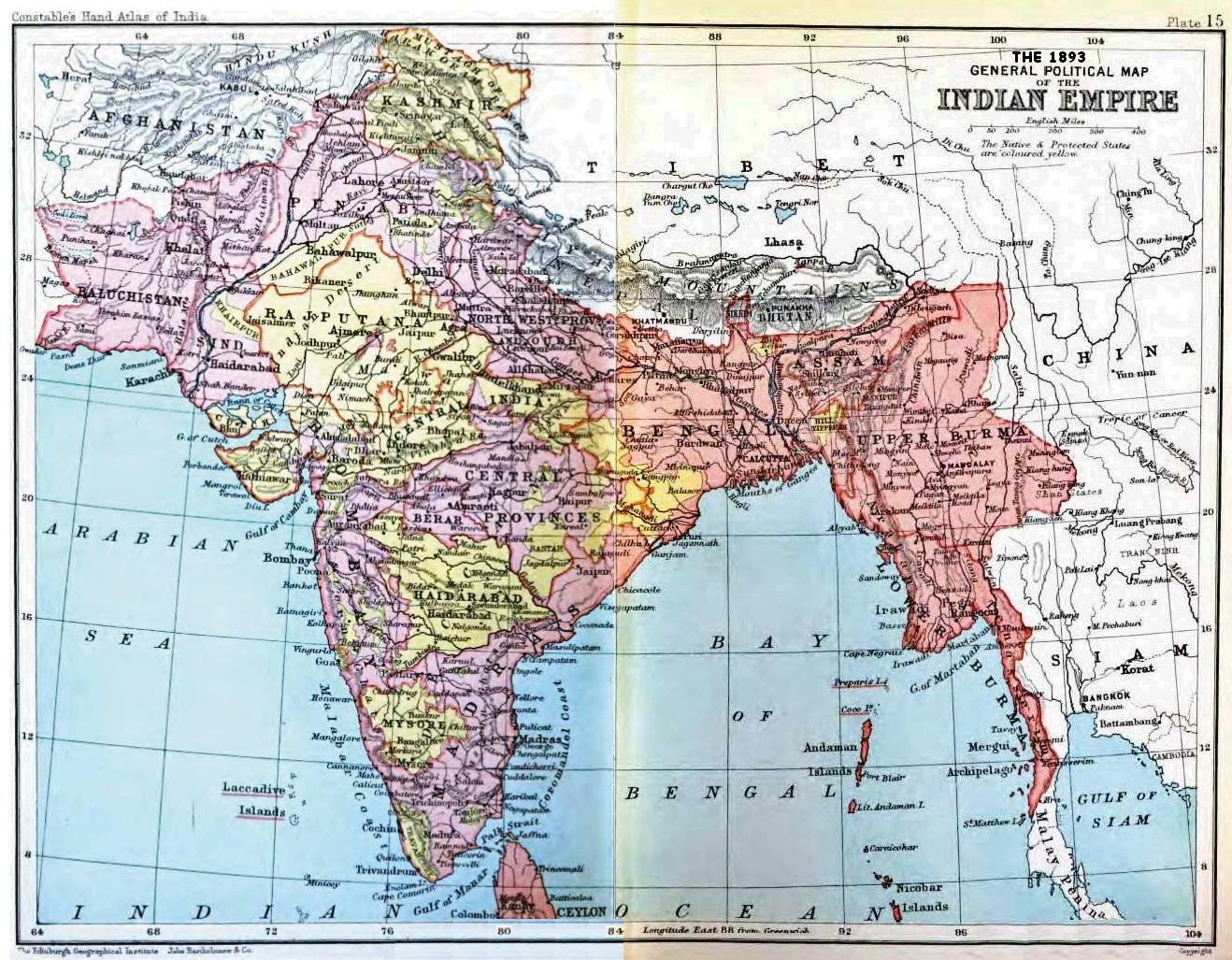
Colonial India
Colonial India was the part of the Indian subcontinent that was occupied by European colonial powers during the Age of Discovery. European power was exerted both by conquest and trade, especially in spices.[1][2] The search for the wealth and prosperity of India led to the colonisation of the Americas after Christopher Columbus went to the Americas in 1492. Only a few years later, near the end of the 15th century, Portuguese sailor Vasco da Gama became the first European to re-establish direct trade links with India by being the first to arrive by circumnavigating Africa (c. 1497–1499). Having arrived in Calicut, which by then was one of the major trading ports of the eastern world,[3] he obtained permission to trade in the city from the Saamoothiri Rajah. The next to arrive were the Dutch, with their main base in Ceylon. Their expansion into India was halted after their defeat in the Battle of Colachel to the Kingdom of Travancore, during the Travancore–Dutch War.
Trading rivalries among the seafaring European powers brought other coastal powers from the empires of Europe to India. The Dutch Republic, England, France, and Denmark–Norway all established trading posts in India in the early 17th century. As the Mughal Empire disintegrated in the early 18th century, and then as the Maratha Empire became weakened after the third battle of Panipat, many relatively weak and unstable Indian states which emerged were increasingly open to manipulation by the Europeans, through dependent Indian rulers.
In the later 18th century, Great Britain and France struggled for dominance, partly through proxy Indian rulers but also by direct military intervention. The defeat of the formidable Indian ruler Tipu Sultan in 1799 marginalised the French influence. This was followed by a rapid expansion of British power through the greater part of the Indian subcontinent in the early 19th century. By the middle of the century, the British had already gained direct or indirect control over almost all parts of India. British India, consisting of the directly ruled British presidencies and provinces, contained the most populous and valuable parts of the British Empire and thus became known as "the jewel in the British crown".
India, during its colonial era, was a founding member of the League of Nations, a participating nation in the Summer Olympics in 1900, 1920, 1928, 1932, and 1936, and a founding member of the United Nations in San Francisco in 1945.[4] In 1947, India gained its independence and was partitioned into the Dominion of India and the Dominion of Pakistan, the latter of which was created as a homeland for colonial India's Muslims.[5][6][7]
Other external powers[edit]
Sweden[edit]
The Swedish East India Company (1731-1813) very briefly possessed a factory in Parangipettai for about one month of 1733.[38]
Austria[edit]
The Austrian colonisation of the Nicobar Islands (German: Nikobaren, renamed to the Theresia Islands [Theresia-Inseln]) involved a series of three separate attempts to colonize and settle the Nicobar Islands by the Habsburg monarchy, and later the Austrian Empire, between 1778 and 1886. During the period of Austrian colonisation, the Nicobar Islands were previously colonized by the Danish in 1756, but were abandoned due to multiple outbreaks of malaria.[39]
Japanese occupation[edit]
The Andaman and Nicobar Islands were briefly occupied by the Japanese Empire during World War II.[40][41][42]
The wars that took place involving the British East India Company or British India during the colonial era: